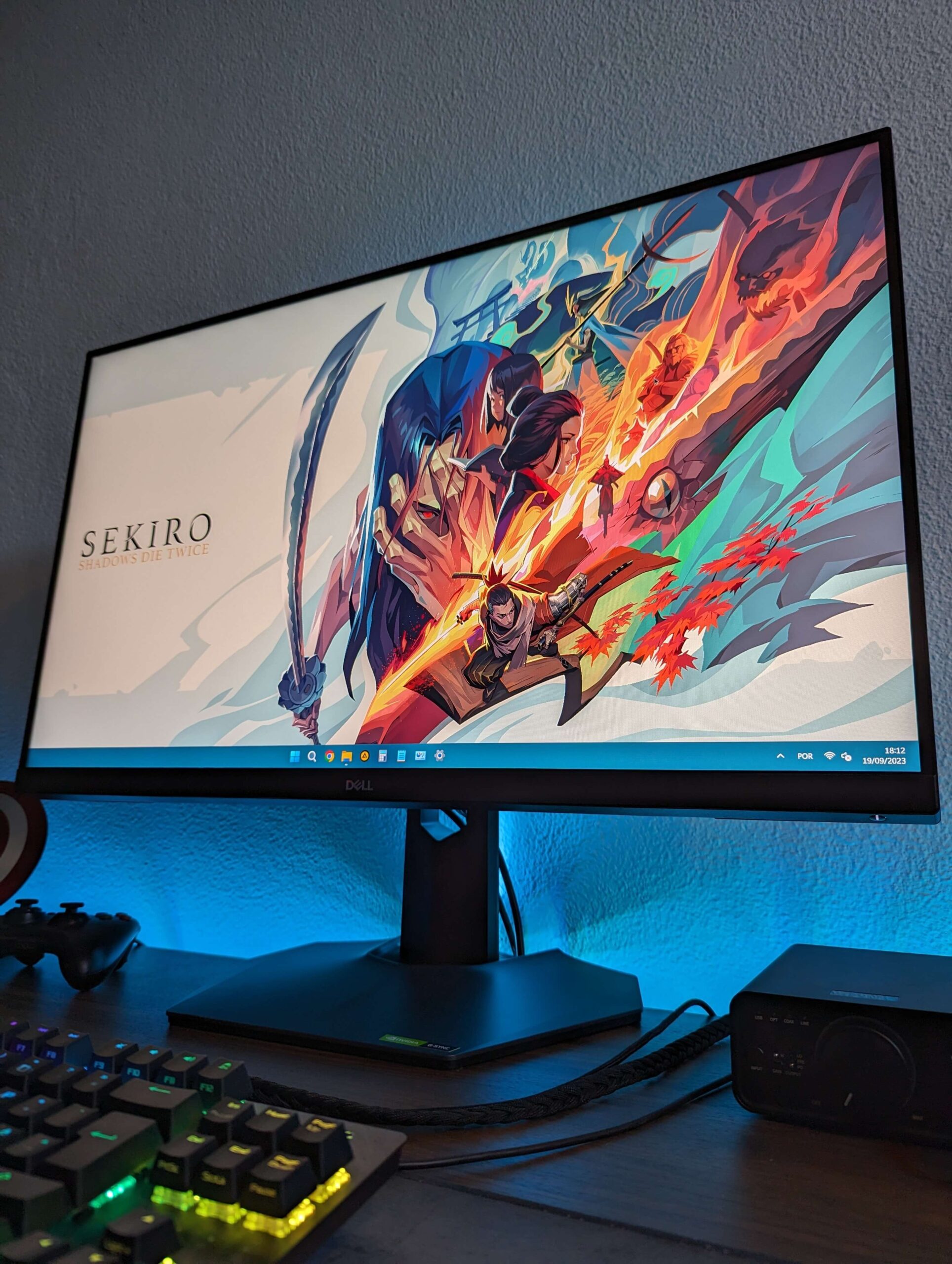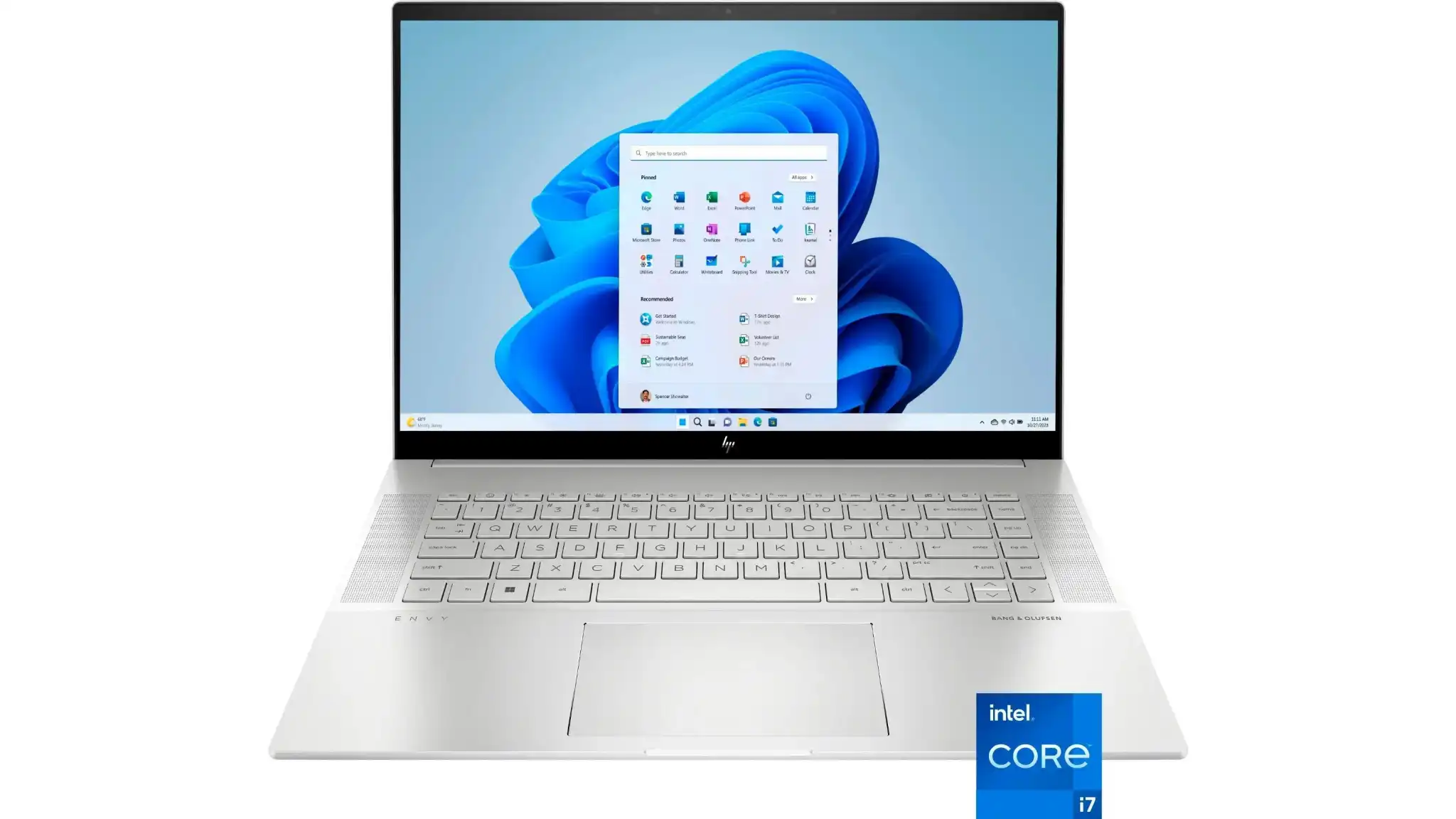It’s also good looking and has no subscription fees
The RingConn Gen 2 is as the name suggests, the second version of RingConn’s smart ring, that’s raised over $4 million on Kickstarter and unlike a lot of crowdfunding projects, is built and ready to ship.
The subscription-free smart ring is now thinner and lighter than the first gen RingConn and is boosting battery too, jumping from a week to almost two weeks. It’s also bringing in a big new feature in the form of a new sleep apnea detection mode.
RingConn’s first effort got plenty right with the design, battery and tracking, with the companion app arguably needing a bit more work. The RingConn Gen 2 shows that the company is listening, making Gen 2 a smart ring truly worthy of a spot on one of your digits.
Design & Build
- Available in silver, gold or black
- IP68 water resistance
- Uses portable charging case
The first RingConn was one of the nicest-looking smart rings outside of rings like Oura and you can include the Samsung Galaxy Ring in that category as well now.
For Gen 2, RingConn is largely sticking to the same look, with your choice of silver, black (tested) and gold colours.
The big difference lies in the lighter and slimmer profile

It’s still made from a titanium alloy with a PVD coating that so has started to pick up some small scratches on the underside of the ring. Like the first one and most other smart rings, you’re going to need to take it off for activities like lifting weights. The ring design is more of a squircle than fully round, which allows the sensor bump to sit snug against the underside of your finger.
The big difference lies in the lighter and slimmer profile (comparison below). On the weight front, it’s dropped from 3-5g down to 2-3g depending on ring size. In terms of thickness, it’s gone from 2.6mm to 2mm. So that’s thinner than the Samsung Galaxy Ring (2.6mm), the Oura Ring Gen 3 (2.5mm) and the Circular Ring Slim (2.2mm). The slimmer look helps to make it a more discreet ring to wear and feel closer in stature to a normal ring.
You still need the sizing kit if you want to make sure you get the best fit and it covers the same 6-14 sizes as the previous ring. I found opting for the same size 8 I had the first RingConn in offered a similar overall fit.
It hugs a little closer than other smart rings due to the positioning of the sensors, but it’s never felt uncomfortable to wear.
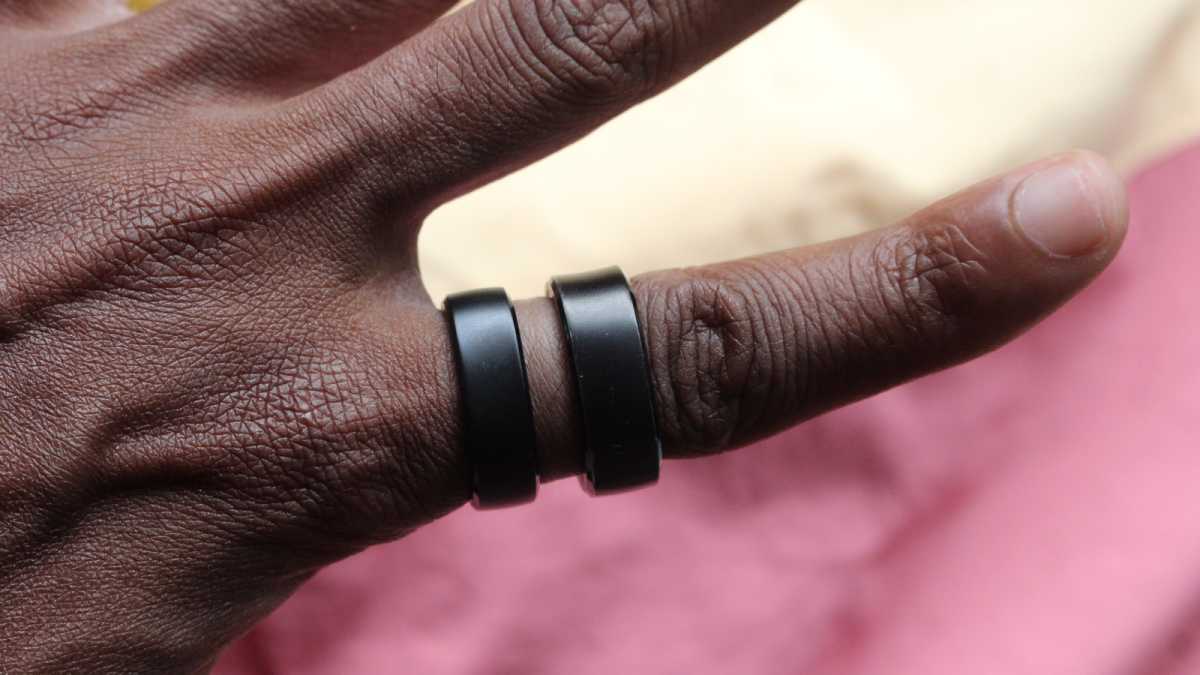
Mike Sawh
This is still a ring you can keep on for showers, washing the dishes and swimming, as RingConn sticks to the same IP68 waterproofing rating. That according to RingConn means it can be submerged in water up to 100 metres depth. It’s not the strongest level of protection against moisture you’ll find on a smart ring, though it should be enough for most people.
It’s good to see that RingConn has stuck to a portable charging case to power the ring up, which is a charging setup that Samsung adopted for its Galaxy Ring. RingConn was there first with it and while not as compact as I’d like it to be, it is capable of delivering 15-20 recharges (many more than Samsung) and can fully charge the ring in less than 90 minutes.
Fitness & Tracking
- Tracks steps, sleep, heart rate and stress
- Wellness insights in beta
- Sleep apnea detection mode introduced
The experience of what you can track and monitor on the RingConn Gen 2 compared to the original hasn’t changed massively.
It still hosts the same PPG optical sensors that can track heart rate, SpO2 levels, skin temperature and stress. It’s also capable of capturing sleep and tracking daily step counts just like your typical wrist-worn smartwatch.
The headline new feature also tagged as a beta one is a sleep apnea monitoring mode
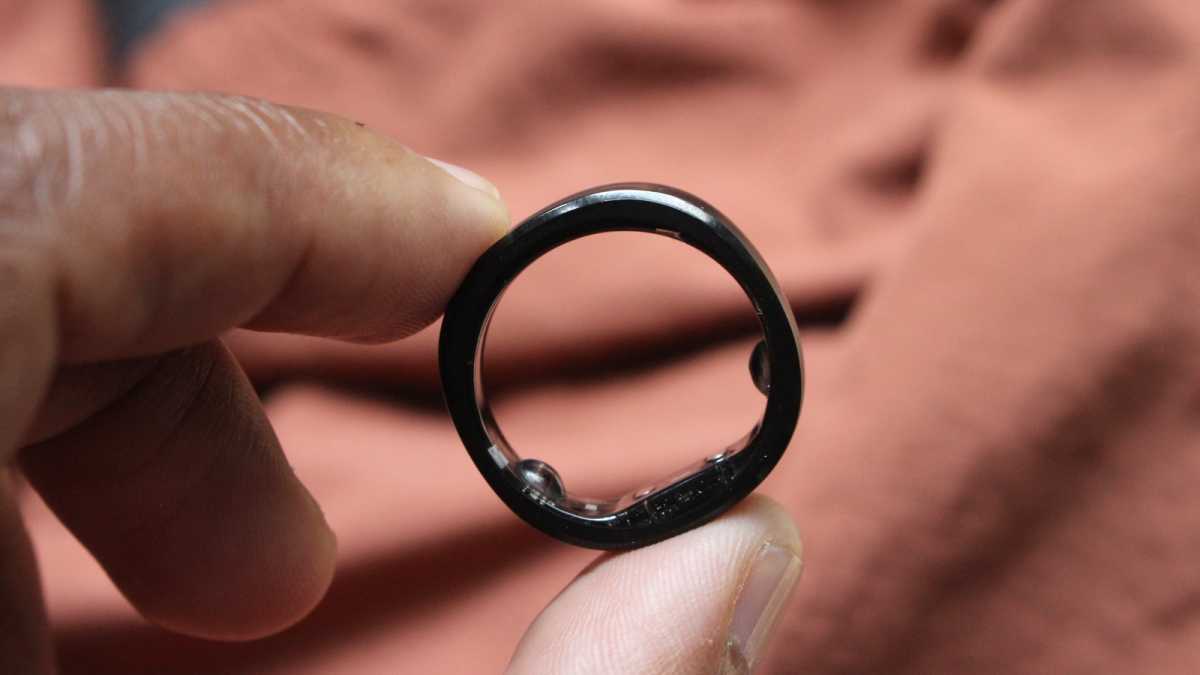
In addition to that, there are some features tagged as beta features, which both appeared on the first ring. The first is an exercise tracking mode, which is designed for indoor and outdoor running, outdoor cycling and outdoor walking.
I used it against a heart rate monitor and was actually surprised how well it did. Average and maximum heart rate readings didn’t entirely match up with it, though weren’t wildly off either. The maximum readings were typically 4-5 bpm higher, though in general it performed better than similar modes on other smart rings. There’s also the Wellness Balance widget, which offers recommendations based on your core fitness and wellness data.
The headline new feature also tagged as a beta one is a sleep apnea monitoring mode, which claims to be able to detect signs associated with the sleep disorder. The Apple Watch Series 10 claims to do the same.
RingConn says it’s conducted hundreds of clinical studies to back up the reliability of the feature, saying it’s achieved an accuracy of 90.7% of identifying sleep apnea. Though, it’s not a feature that has any sort of regulatory approval nor does RingConn say it’s designed for medical use or to replace advice from a healthcare professional.
From a fitness tracking perspective, you’re able to see data like step count totals and when those steps took place across a day. You can also see details on calorie burn, the number of hours you stood for and an activity intensity graph to show you when you’re most active over a day.
Daily step counts were never overly high or low compared to the Oura Ring Gen 3 or the tracking on a Garmin watch, and were generally within a few hundred steps of those trackers. That data is largely well presented inside of the app, but as is the case for other areas in that companion app, it lacks that more engaging feel you get from delving into companion apps from the likes of Oura and Ultrahuman.
it’s a very comfortable and unobtrusive ring to sleep with thanks to the slimmer and lighter design
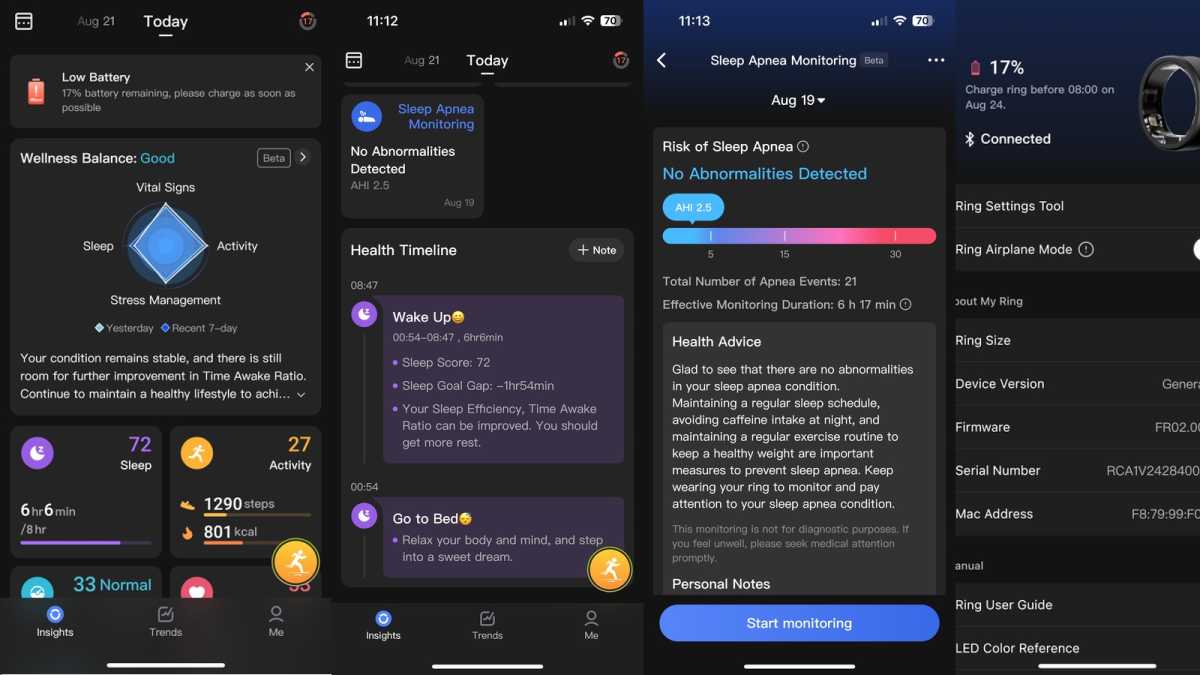
When it’s time to take the ring to bed, first and foremost, it’s a very comfortable and unobtrusive ring to sleep with thanks to the slimmer and lighter design. During the night it focuses on sleep duration, sleep stages, generating a sleep score and capturing metrics like heart rate, temperature, heart rate variability and respiratory rates.
I wore it alongside the Oura Ring Gen 3 and found that data like total sleep, sleep scores, resting heart rate and average heart rate variability metrics were all very similar. If your metrics are slightly off, there’s some pretty general advice offered up like avoiding coffee before bed or doing strenuous exercise close to sleep to make sure you’re in a more relaxed state.
With the new sleep apnea detection mode, you’ll need to manually start the screening from the app, and then switch it off from the app the next morning. During that period the ring collects physiological data including blood oxygen levels and analyses it to detect what it deems as apnea events.
On the first night of tracking it found no abnormalities. On the second night, it suspected a mild risk of sleep apnea and identified a drop in blood oxygen levels below what’s deemed normal. On most other nights it was back to discovering no abnormalities.

It wasn’t clear why I had that mild risk assessment on one night and I’d certainly treat this feature as one to perhaps use as a prompt that something might not be right as opposed to definitively telling you there’s a problem. The data is well presented and could potentially be a very useful feature if RingConn can get that accuracy is closer to 100%.
The continuous heart rate and stress tracking felt pretty reliable too, with the former not tracking heart rate activity too high, which can be the case on some smart rings if the fit isn’t quite right. You still have the scope to take on the spot measurements of your current heart rate and SpO2 levels, which can take anywhere from 30-60 seconds in terms of measurement time.
Elsewhere, the Wellness Balance modes haven’t changed much since I first encountered them on the first RingConn. The Wellness Balance insights and suggestions felt a little general in advice, while drilling down into individual metrics needs to feel less like simply listing a bunch of scores. There’s clearly something to work with here, but it needs to feel more like you’d want to engage with these insights on a regular basis like you do want to with other rings.
Battery Life & Charging
- Up to 12 days battery life
- Uses portable charging case
- Fully charges in 90 minutes
One of the highlights of the first RingConn was the battery life and its ability to go longer than any other smart ring.
It claimed 7 days, in reality it was 5 days. For RingConn Gen 2, it’s promising more and says it can last up to 12 days before you’re dropping into the accompanying charging case.
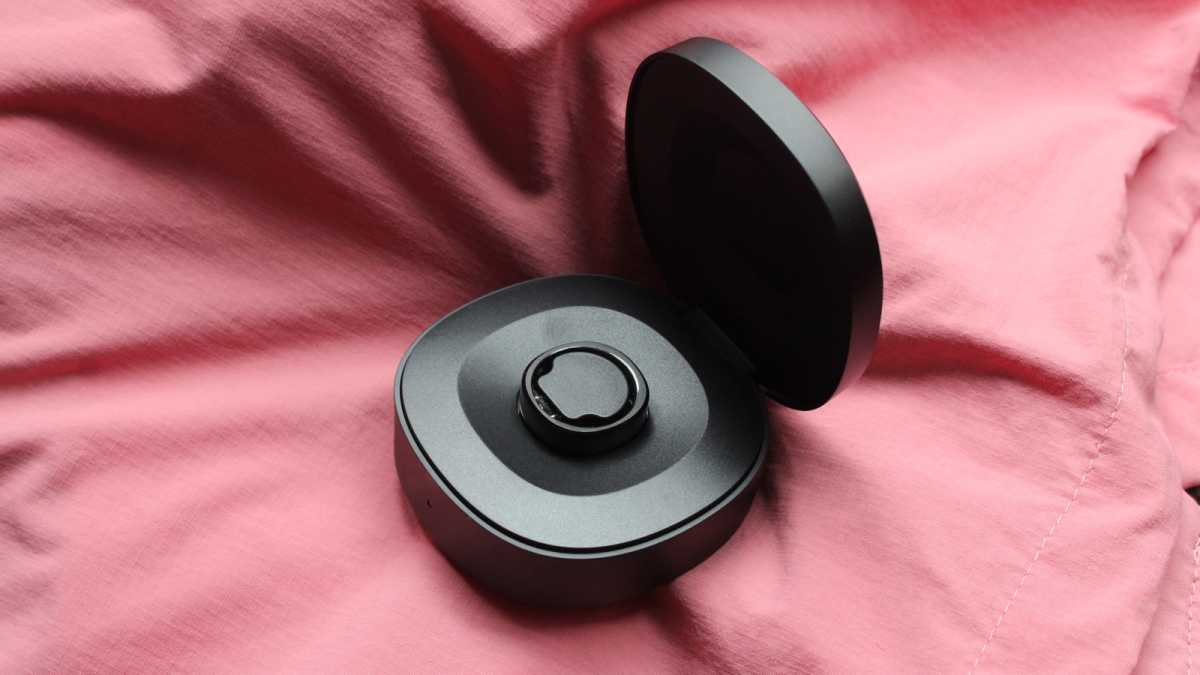
I look at the battery in two ways. If you don’t use the new sleep apnea monitoring mode, the battery is capable of going beyond a week and towards that 12 day mark. The daily drop was roughly 10% on average. If you use the sleep apnea mode every night, the battery drop is more severe. I found that using that feature saw the battery drop around 10% overnight. That still means you can get 5 days from it, which is still better than what you’ll enjoy from many other smart rings.
When it comes to charging, it takes 90 minutes to fully charge the ring while the charging case can take 90-120 minutes to get it fully charged as well.
What I like about the charging setup is that from the app it will give you a suggestion on when you should charge it to make sure you don’t get caught short during sleep or getting through another day. This small piece of information makes a big difference with helping you keep that battery topped up
You’ve also got a great charging setup here, which means you can charge it on the move like Samsung’s Galaxy Ring. I still wish it was a touch smaller, but with the ability to deliver 15-20 charges when fully charged, this is arguably the best battery and charging setup you’re going to find on a smart ring.
Price & Availability
The RingConn Gen 2 is currently available through RingConn’s Kickstarter campaign with estimated shipping of October. Buying this way (retailers like Amazon should follow) means paying $299 (around £225), making it a slight jump up in price from the original RingConn ($279 – around £220).
It should be noted there’s no subscription needed so you’re just paying for the ring.
If you compare that with the cost of other smart rings, it’s now the same price as the Oura Ring Gen 3 (£299/$299), which also requires a $5.99 a month subscription to get full access to all available data and insights.
That does mean it’s cheaper than the subscription-free Samsung Galaxy Ring (£399/$399) and the Ultrahuman Ring Air (£329/$349). It’s not quite as cheap as putting a Circular Smart Ring Slim (£226/$264) on your finger, though that ring didn’t massively impress when I tested it.

Should you buy the RingConn Gen 2?
If you want a smart ring that looks great, offers strong core tracking and has the best battery life by far on any smart ring right now – all without a subscription fee – these are the biggest reasons to grab the RingConn Gen 2, and you’ll have a very good overall experience using it.
If you’re looking for a ring that offers a clean, engaging and polished software experience that does a good job of presenting metrics and insights in a way that you can really absorb and take them in, I’d say there are rings that do a better job of that. Namely Oura, Samsung and Ultrahuman.
If RingConn can rectify our gripes with the software then it really does have a smart ring that can compete with the Oura Ring Gen 3 (possibly the Oura Ring Gen 4), Ultrahuman and Samsung Galaxy Ring, and do it for less of your money too.
Specs
- 10-12 days battery life
- Works with Android and iOS
- Subscription-free app
- Weighs 2-3g
- 2mm thickness
- PPG sensor
- IP68 water resistance
- Portable charging case



